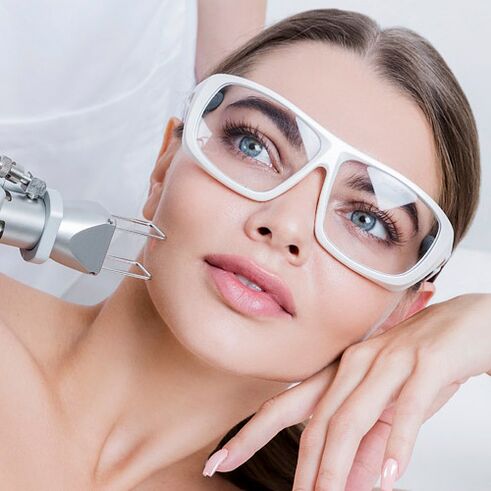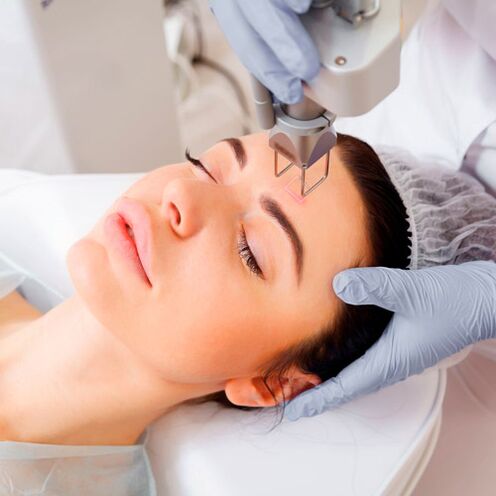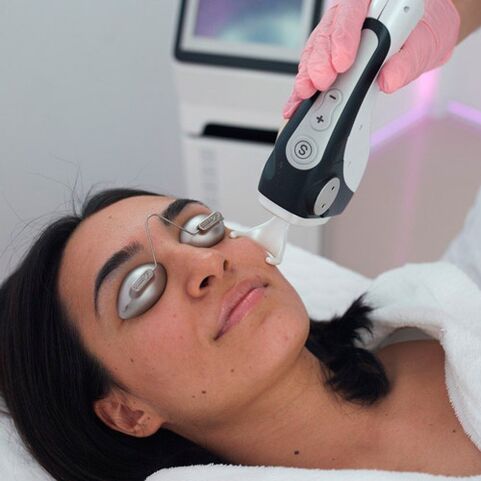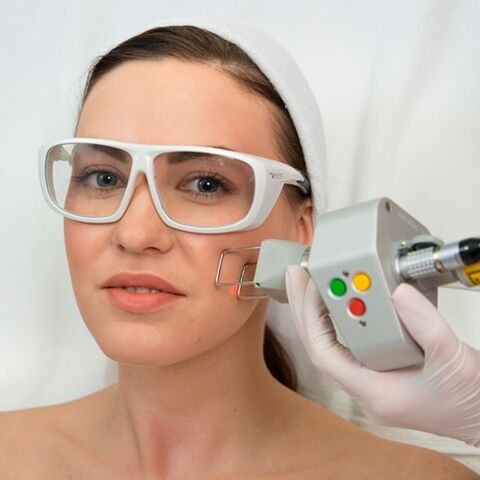Fractional laser rejuvenation- a cosmetic procedure in which the skin is exposed to a laser array made up of microscopic rays. The purpose of this effect is to activate the processes of regeneration and collagenogenesis. This is a relatively new hardware technique, but already very popular. In another way, it is called fraxel, fractional laser or photothermal resurfacing.

Working principle and types of fractional laser rejuvenation
How does fractional laser work? The micro-beams emitted by the apparatus cause thermal shock, in response, the "lazy" skin cells begin to work more actively. To repair damaged areas, they divide faster. Old cells that do not function will die, making room for young cells. Heating of the deep layers of the skin is accompanied by partial denaturation of proteins, as well as the formation of new components of the extracellular matrix, including elastin and collagen.
Depth of impact is distinguishedRemoval and non-ablative laser rejuvenation. . . The first is superficial and like grinding. Laser treatment of the upper layers of the skin is accompanied by evaporation of moisture, which damages the epidermis. Once healed, the skin becomes firmer, reduced and even-toned. In non-ablative photothermolysis, the laser penetrates the deep layers of the skin. In this case, no open wound was formed.
Each type of rejuvenation has its advantages and minutes. Therefore, the effect of ablative laser resurfacing can be seen immediately after the first application. Using this method, you can get rid of deep wrinkles and age spots, after acne, stretch marks, scars. With a non-ablative procedure, there is no risk of infection, and the anti-aging effect is evident for several years. This type of photothermal is recommended for people under 40 years old, with the first signs of aging: small wrinkles, hair loss.

Indications and contraindications for the procedure
You should use the photothermal process if you have:
- Loose, saggy skin.
- Just erase deep wrinkles, crow's feet.
- Pigment of any origin.
- Increased sebum secretion.
- Enlarged pores, prone to acne.
- Scars, stretch marks, after acne.
- Vascular "asterisk" (rosacea).
- Dull skin tone.

Contraindications for fractional laser rejuvenation are:
- Allergies, psoriasis.
- Autoimmune diseases.
- Pregnancy, breastfeeding.
- Blood diseases.
- Skin infections, inflammation of the area intended to be treated.
- Any chronic disease in the decompensated phase.
- Cancer.
- Increase body temperature.
- Diabetes.
- There is a tendency to form keloids.
- Epilepsy disease.

Features of laser rejuvenation
Preparation for fractional photothermolysis includes refusing to visit the solarium and beach for two weeks. All this time, you also can not clean the skin, chemical peels, take sulfonamides, fluoroquinolones, tetracyclines. Three days before the procedure, they stopped going to the swimming pool, bathhouse, sauna, treating the area allegedly exposed to alcohol-containing cosmetics. To prevent complications, the esthetician may prescribe antiviral and antibacterial drugs for this period. On the day before the procedure should be carried out without alcohol and tobacco, without going to the gym.
Before laser treatment, the skin is cleaned of cosmetics and impurities. In general, the effect of the laser is thought to be an uncomfortable tingling sensation, but pain relief may sometimes be required. In this case, the beautician applies anesthetic to the prepared skin area. After the ointment took effect, he proceeded to treat the skin with a laser. The duration of the procedure depends on the extent of the treatment area and ranges from a few minutes to an hour. Finally, the skin is soothed with a nourishing cream.
The first days after the procedure, you can not use alcohol products, compress the parts of the body where the photothermolysis is performed, with a compression towel. It is recommended to exclude physical activities for a week, visit the pool, sauna or bath, limit time spent on the street. Skin is moisturized with a special cream three times a day. And so for half a month. Do not peel the skin, use cosmetics with retinol, salicylic acid. For two months, it is necessary to use a sunscreen with a sun protection factor of 35 or higher.

How many procedures do you need to achieve results? What effect can you expect?
The recovery time after laser vaginal rejuvenation lasts from 3 to 7 days. The speed of recovery depends a lot on your lifestyle. Drinking, smoking, overactivity, an unbalanced diet, insomnia and anxiety - all of these can slow down the regeneration process.
The first three days after laser exposure, the skin may be slightly red and swollen. Numbing medications and cooling the skin can help reduce discomfort. If within a week the skin feels tight, it is normal to have areas of flaking. A side effect of this procedure can be a bronzed tan, which disappears on its own after half a month.
Long-lasting results after fractional photothermolysis occur after 2-5 procedures. More specifically, the number of sessions can only be determined by an esthetician, based on the primary data. The interval between procedures is 3-4 weeks. As a result of fractional laser rejuvenation, aging processes are inhibited: wrinkles disappear or are less noticeable, wrinkles are increased, pore severity is reduced, and skin tone is reduced. improved. This method is an effective tool in the fight against scars, melasma, post-acne, stretch marks.
Fractional laser skin rejuvenation is one of the three most popular hardware cosmetic procedures. Its advantages include effectiveness, short healing time, physiology. Results are visible after the first procedure and last up to three years. This method has many indications. The depth of the laser can be selected.


























